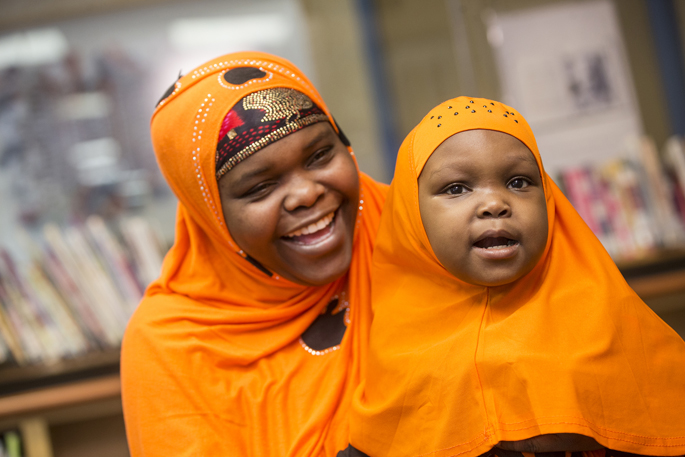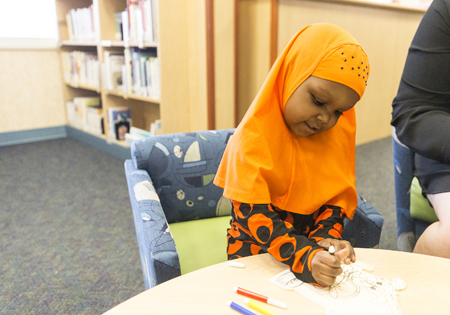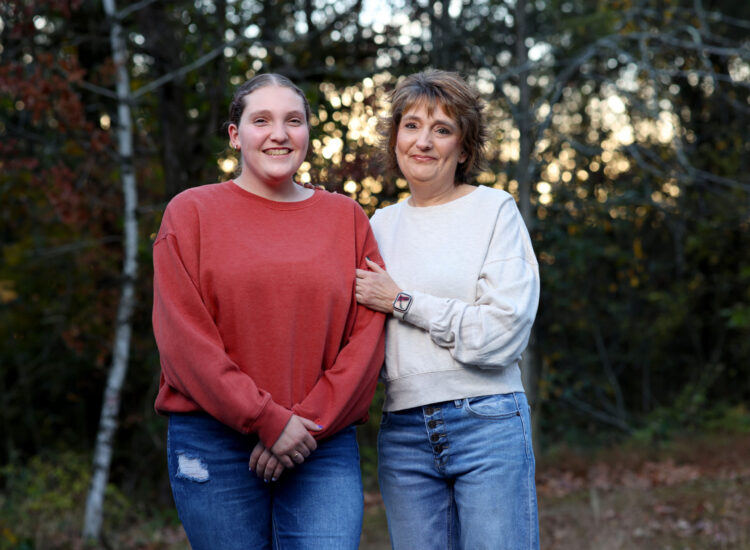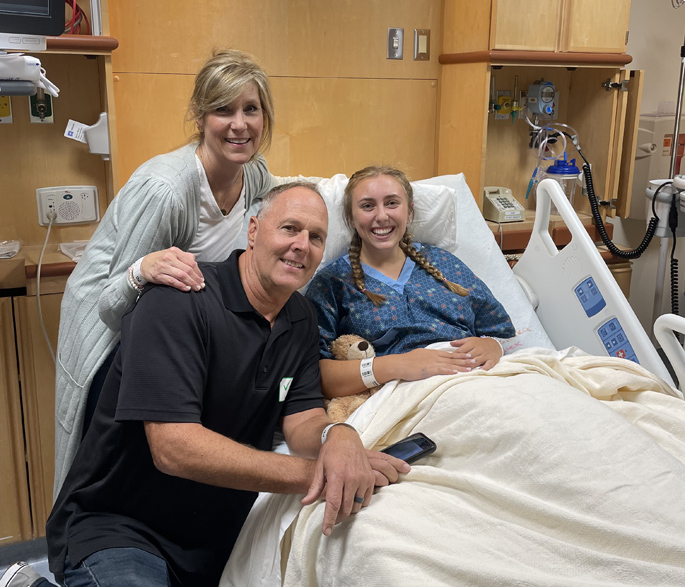
There are no words for liver transplantation in Somalian refugee Aniso Haji’s native language.
As a translator meticulously selected words to describe the medical procedure that would ultimately save the life of Haji’s youngest daughter, Fatuma Abdikadir, members of the pediatric liver transplant team at Monroe Carell Jr. Children’s Hospital waited anxiously.
Haji spoke no English and was not able to read or write in Somali. That, combined with significant cultural barriers, meant this case was going to be a challenge.
“It was so important that we were able to communicate every single detail about Fatuma’s case, the transplant as well as the care she would require after the surgery,” said Carly Bhave, nurse practitioner and pediatric liver transplant coordinator at Children’s Hospital. “We needed to make sure that she would have the optimal medical management.
“A lot of times, we in the medical field are all about outcomes and numbers and labs. We had to stop and focus on this child, her mother and how best to communicate. Before we can take care of a patient medically, we have to get on their level and get a good handle on where they are,” Bhave said. “Because we took that time to peel back the layers and work through how to approach this situation and devise ways to best teach her how to care for her daughter, we made it work.”
In 2015, Fatuma Abdikadir was diagnosed with biliary atresia, a life-threatening liver and bile duct disease that occurs in infancy and is the most common reason pediatric patients need liver transplantation.
“I was afraid she might die,” said Haji, through an interpreter. “Most of the time she wasn’t eating, she wasn’t moving around. She vomited a lot and had a lot of diarrhea.
“We did not understand what was going on. The doctors talked to us, but we were not sure about anything. We did not know what the right thing to do was. It was such a difficult time. We had never heard of this. Members of our community had never heard of this. We were all very unsure and I was very scared about what to do.”
With biliary atresia the bile becomes trapped and damages the liver, which leads to scarring and makes it difficult for the organ to remove toxins from the blood. Over time the toxins increase, leading to liver deterioration.
A Kasai procedure is typically the first treatment surgeons perform in an attempt to restore bile flow from the liver into the intestines.
The surgeon removes a portion of the liver where the bile ducts are normally and directly connects a portion of the small intestine to the liver to drain the bile. Unfortunately, it is not always a cure.
For Fatuma that was the case. A liver transplant was her only option.
Through the use of video remote interpreting, pictures and innovative teaching methods, Haji became comfortable with the idea of a transplant and learned how to care for her daughter after surgery.

Fatuma’s success is heralded as a team effort.
“Fatuma could have easily escaped the opportunity for a transplant because of the multiple cultural, communication and social barriers,” said Lynette Gillis, MD, assistant professor of Pediatrics and medical director of Pediatric Hepatology and Liver Transplantation at Children’s Hospital. “It was amazing the lengths that the team took to educate and ensure her mother was comfortable. It’s great to see the confidence she exudes.
“And to see Fatuma — she’s a medical mission trip that happened at Vanderbilt.”
Seth Karp, MD, H. William Scott Jr. Professor and chair of the Department of Surgery and director of the Vanderbilt Transplant Center, was part of the team to consent the family for transplant.
Every transplant has its difficulties, he said, for different reasons. He applauded the team for pushing through the roadblocks to provide the best outcome.
“It is important for us to recognize, as clinicians, that healthcare is not monolithic,” Karp said. “People look at healthcare in very different ways. It is our job to understand other peoples’ sensitivities around healthcare issues as well as recognize and appreciate cultural differences.
“The language and cultural barriers were challenging,” Karp said. “This family came from a country where a transplant has never been performed. They have no frame of reference. But together, we bridged the gap. And now their little girl is happy, playful and doing well.”
April 30 will mark the one-year transplant anniversary. It will also be Fatuma’s third birthday.
“This year we want to celebrate in a big way,” Haji said. “We are going to have a party and she will be happy. We have so much hope for her.
“I did not think she was going to survive. The scariest day for me was the transplant. Now, she is completely different,” said Haji. “She running around, watching TV, playing and asking me, in English, what I am doing and what I am cooking,” she said, chuckling.
“She loves to draw. My walls were white and clean before, but now everywhere there is a drawing or writing!”
Haji pauses to thank the team for their determination and skill.
“They tried so many different things to help my daughter feel better. They did not give up. They worked with me to help her. I am so thankful.”
Anne Laurence Johnson, LCSW, the pediatric social worker assigned to the case, commended the team as well as Haji’s dedication to her daughter’s care.
“Aniso (Haji) came to the U.S. knowing no English and was unable to read or write in Somali,” said Johnson. “Due to difficulties in communication, she never hesitated to come to clinic when she had questions or thought something was not right.
“She coped well with so many uncertainties and changes and had an immense faith in herself, her family and the medical providers.”
Grasping the basics of a life-saving procedure is challenging, said Bhave. The addition of language and cultural differences made for a nearly impossible situation.
“This has been an amazing experience for our team,” said Bhave. “It was daunting, but we knew we were doing the right thing pushing forward. Now we see the benefit of it all. Fatuma is so endearing and we impacted this family and an entire community.”














